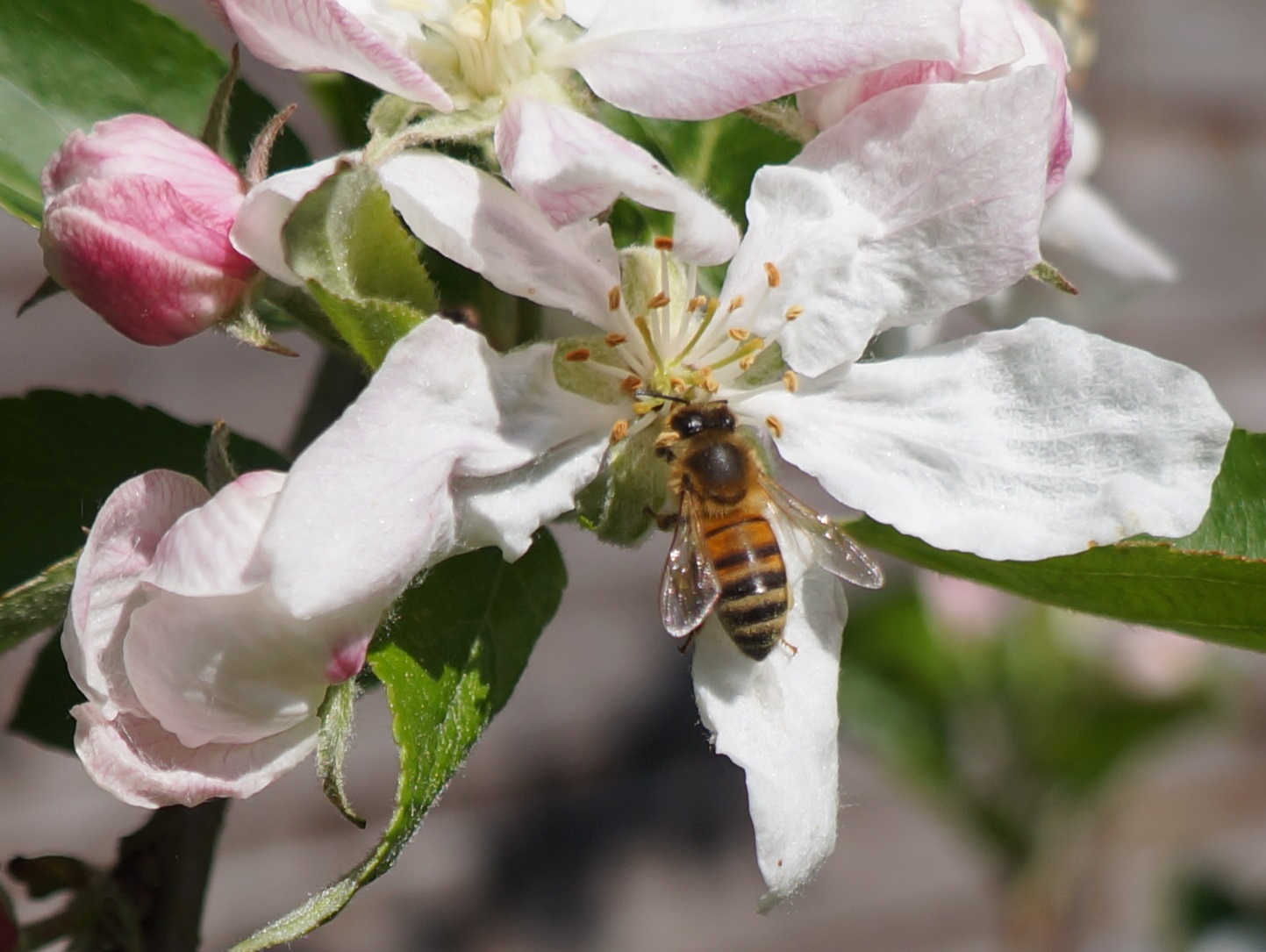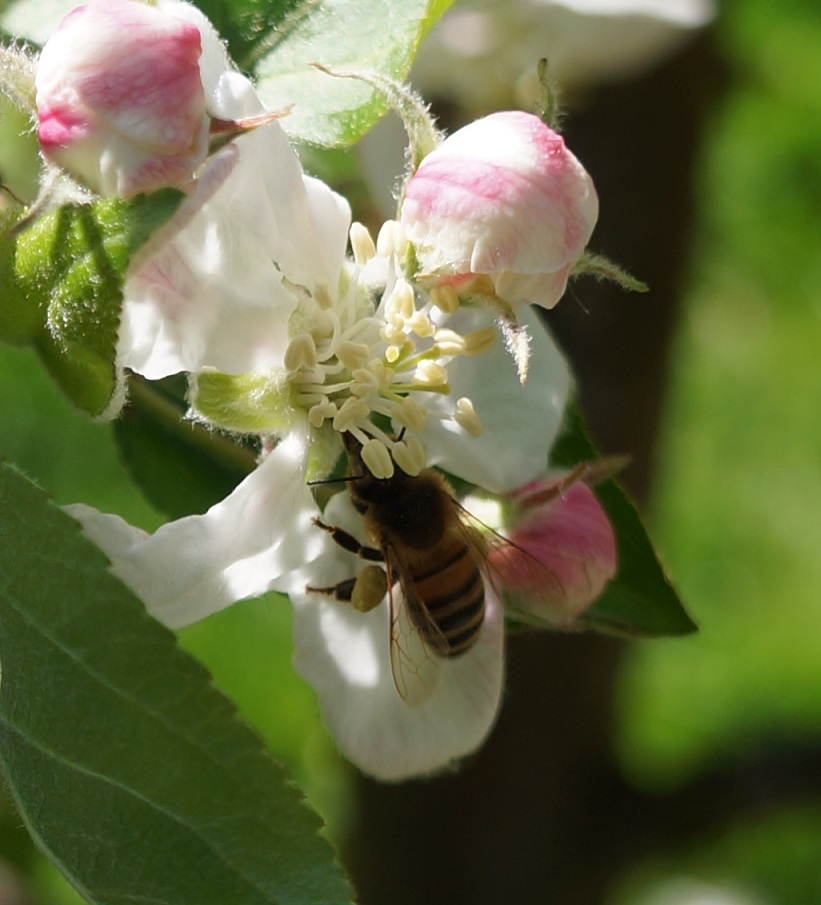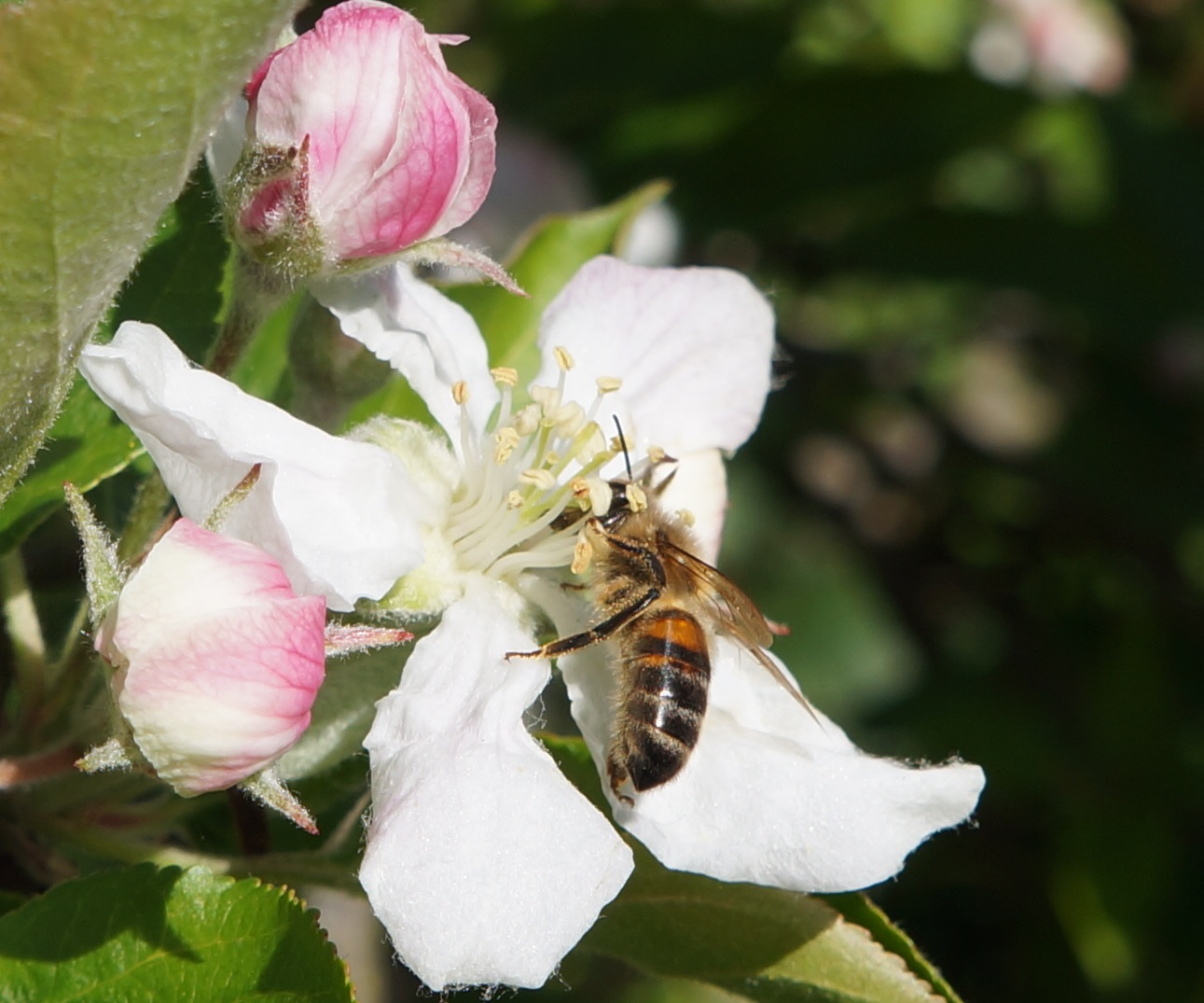 Abraham Lincoln
If given the truth, the people can be depended upon to meet any national crisis...
Abraham Lincoln
If given the truth, the people can be depended upon to meet any national crisis...
 Guildford news...
for Guildford people, brought to you by Guildford reporters - Guildford's own news service
Guildford news...
for Guildford people, brought to you by Guildford reporters - Guildford's own news service
Beekeeper’s Notes May ’17 – Three Foot or Three Miles?
Published on: 1 May, 2017
Updated on: 1 May, 2017
Hugh Coakley keeps bees in Worplesdon. In the latest of his monthly notes, he talks about a possible flaw in the phenomenal navigational ability of bees.
It is astonishing how far bees will go to and from their hive to forage.
Research has shown that they typically fly 1 – 2 km and even up to 12 km to bring back the shopping. That is 12 km there and 12 km back.
For a tiny creature weighing only about 100mg and with a pollen, nectar or water payload of about 30 mg, how do they do it?
If I was carrying about a third of my body weight, I doubt I could do 100m. And certainly not with any dignity.
The honey bee can only forage at a distance where on average the energy used to travel there and back with food is less than the food energy provided. Even bees have to make a profit.
But the honey bee does travel bewildering distances and with astonishing accuracy.

Moving a hive in my apiary at home on a trolley can be difficult and risky. Every couple of days in the evening, I pull the trolley less than three feet towards the desired new location. If I did I in one go and more than three foot, the bees would not be able to locate the hive. It can be quite tortuous but it works. Click on the photos to enlarge them.
The difficulty – and the flaw – comes when the beekeeper wants to move the hive, maybe to take advantage of an oil seed rape crop or the heather bloom or just to a more convenient place in the garden.
In the natural state, honey bees set up home in hollow trees or other massive cavities. The bee can rely upon that sort of home to stay put.
If the hive is moved, what do bees do?
If it is more than three miles, the bees recognise they are in a different place and will generally navigate to the new hive location. If the hive is moved less than three feet in the garden say, the bees tend to mill around the old location but they quickly work it out.
But between the three foot to three mile range, they get lost and will return to the old location or drift off to other colonies. The exception to this is when the bees swarm. Swarming seems to shut off their ‘homing’ instinct and they will adapt to their new postcode immediately.
So, is it a flaw?
If there is a flaw, it is one introduced by cunning beekeepers moving hives. Why should a bee expect its tree home to move? So again, top marks to the clever bee.
On a different tack, I have been taking some photographs of the bees on apple blossom earlier this year – see below.
Responses to Beekeeper’s Notes May ’17 – Three Foot or Three Miles?
Leave a Comment Cancel reply
Please see our comments policy. All comments are moderated and may take time to appear. Full names, or at least initial and surname, must be given.
Click on cartoon for Dragon story: Public Asked for Views on SCC’s Proposal for Reduced Speed Limits




Recent Articles
- Update: Two-Week Road Closure on Portsmouth Road for Gas Network Upgrade
- Updated: Crop Fire Destroys Wheat Field on the Slopes of the Hog’s Back Near Guildford
- Thames Water Announce Hosepipe Ban – But Not for Guildford
- Letter: Normandy Proposal Needs A Proper Services Audit
- Notice: Free Bereavement Support Programme
- Normandy Housing Plan Reignites Concerns Over ‘Damage To Our Community’
- Letter: The Class of 1955 Meets 70 Years On.
- Highways Bulletin: Reimagining Parking with Green Design
- Opinion: Never Have We Needed the Benefits of the Natural World More
- SCC Calls on the Government To Protect the Environment



Recent Comments
- Richard Cooke on Letter: Snail-paced Progress for Full Weir Repair
- Bethan Moore on Guildford’s First “Bike Bus”
- Andy Friend-Smith on Guildford’s First “Bike Bus”
- Peter Mills on Guildford’s First “Bike Bus”
- Des Flanders on Making History As Pewley School’s Class of ’54 Hold Their Final Reunion
- Margaret Rotherham on Guildford Festival Burst with Colour, Culture and Community Spirit
Search in Site
Media Gallery
Dragon Interview: Local Artist Leaves Her Mark At One of England’s Most Historic Buildings
January 21, 2023 / No Comment / Read MoreDragon Interview: Lib Dem Planning Chair: ‘Current Policy Doesn’t Work for Local People’
January 19, 2023 / No Comment / Read MoreA3 Tunnel in Guildford ‘Necessary’ for New Homes, Says Guildford’s MP
January 10, 2023 / No Comment / Read More‘Madness’ for London Road Scheme to Go Ahead Against ‘Huge Opposition’, Says SCC Leader
January 6, 2023 / No Comment / Read MoreCouncillor’s Son Starts Campaign for More Consultation on North Street Plan
December 30, 2022 / No Comment / Read MoreCounty Council Climbs Down Over London Road Works – Further ‘Engagement’ Period Announced
December 14, 2022 / No Comment / Read MoreDragon Interview: GBC Reaction to the Government’s Expected Decision to Relax Housing Targets
December 7, 2022 / No Comment / Read MoreHow Can Our Town Centre Businesses Recover? Watch the Shop Front Debate
May 18, 2020 / No Comment / Read More









Harry Eve
May 6, 2017 at 8:46 pm
I never realised that honeybees travelled that far. Perhaps some of Hugh Coakley’s are visiting the Cotoneaster in my garden – it is very popular with honeybees and bumblebees while it is in flower. Holly Blue and Green Hairstreak butterflies also seem to like it but the plant can become a problem as its berries are sown everywhere by birds.
Having attempted to photograph honeybees I appreciate the clarity of Hugh’s pictures.
Dorothy August
May 12, 2017 at 2:55 pm
Brilliant photos of bee on apple (?) blossom!